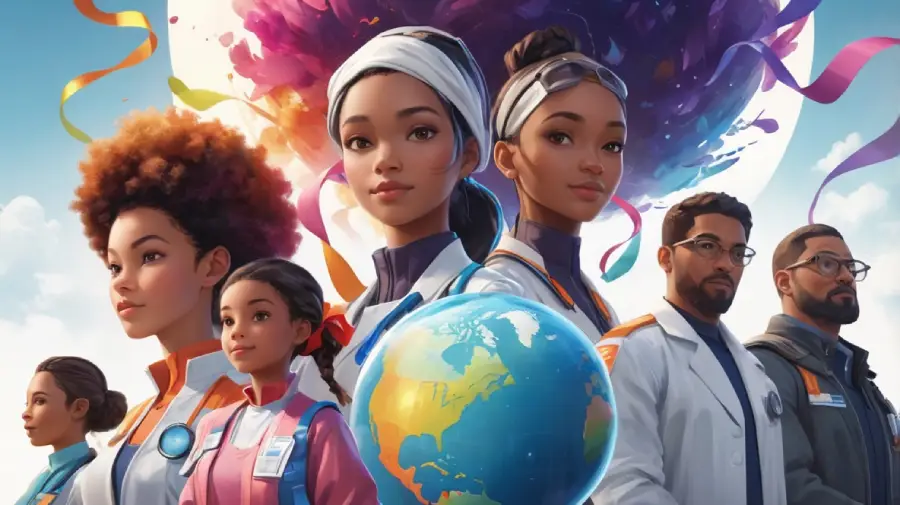Rare Disease Day Awareness: Why It Matters
Rare Disease Day: Shedding Light on the Unseen
Rare Disease Day is more than just a day marked on the calendar; it’s a global call to action for awareness, understanding, and compassion for those living with rare conditions. Celebrated annually on the last day of February, this event unites communities worldwide to highlight the challenges faced by patients and their families, while advocating for better research and medical support. Let’s dive deeper into the significance of this impactful day.

[su_box title=”Rare Disease Day – Next years” box_color=”#fb0400″]
- Friday, 28 February 2025
- Saturday, 28 February 2026
- Sunday, 28 February 2027
- Tuesday, 29 February 2028
[/su_box]
What is Rare Disease Day?
Rare Disease Day, initiated in 2008 by EURORDIS (The European Organization for Rare Diseases), serves as a beacon of hope for millions affected by rare conditions. This event emphasizes the importance of equitable access to diagnosis, treatment, and social opportunities.
The Date: Why February 28 (or 29)?
The choice of date isn’t random. February 28 or 29 (in leap years) symbolizes the uniqueness of rare diseases, akin to the rarity of leap day itself.
Understanding Rare Diseases
What Constitutes a Rare Disease?
In the United States, a condition is classified as rare if it affects fewer than 200,000 individuals. Globally, over 300 million people live with a rare disease.
Examples of Rare Diseases
- Huntington’s Disease
- Cystic Fibrosis
- Ehlers-Danlos Syndrome
The Challenges of Rare Diseases
Delayed Diagnoses
Many patients endure years of uncertainty before receiving an accurate diagnosis. This “diagnostic odyssey” often involves numerous tests and specialists.
Limited Treatment Options
Unlike common conditions, rare diseases rarely attract significant research funding, leading to a lack of targeted therapies.
Social Isolation
Living with a rare disease often means feeling alone, misunderstood, and marginalized.

The Objectives of Rare Disease Day
Raising Awareness
The day aims to shine a spotlight on rare diseases, encouraging conversations and understanding.
Advocating for Research
Support from communities and organizations drives funding and innovation for treatments.
Fostering Unity
Rare Disease Day brings together patients, families, researchers, and policymakers to work towards common goals.
How to Get Involved
1. Attend Local Events
Many cities host walks, seminars, and awareness campaigns. Check your community calendar for events near you.
2. Share Stories Online
Use hashtags like #RareDiseaseDay to spread the word on social media.
3. Donate or Volunteer
Support organizations dedicated to rare disease research and patient care.
4. Educate Yourself and Others
Knowledge is power. Learn about rare diseases and share insights with your circle.

The Role of Science and Research
Current Advancements
Breakthroughs in gene therapy and personalized medicine offer hope for previously untreatable conditions.
The Need for Funding
Sustainable funding is crucial for developing effective treatments and improving patient quality of life.
Rare Disease Day Across the Globe
United States
Advocacy groups collaborate to organize events that amplify patient voices.
Europe
The continent leads with robust initiatives by EURORDIS, focusing on policy changes.
Asia
Countries like Japan and India are increasingly active in rare disease advocacy.
The Importance of Community
Building Connections
Patients and families often find solace in sharing experiences within support groups.
Strength in Numbers
When communities unite, they can push for systemic changes in healthcare and legislation.
Inspiring Stories of Resilience
Overcoming the Odds
Many individuals with rare diseases defy expectations, showcasing remarkable strength and determination.
Heroes Among Us
Caregivers and advocates play an equally vital role in championing the cause.
How Rare Disease Day Impacts Policy
Legislative Efforts
Advocacy on this day has led to the introduction of policies supporting rare disease research and funding.
Global Collaboration
International partnerships foster a united approach to addressing challenges.
Why Rare Disease Day Matters
Rare Disease Day is not just about awareness—it’s about action. It’s a reminder that every life, no matter how rare, is valuable and deserves care, attention, and respect.
Rare Disease Day is a rallying cry for empathy, innovation, and equity. Whether through attending events, sharing stories, or donating, every effort contributes to a world where rare disease patients feel seen and supported. Together, we can make a difference.
FAQs About Rare Disease Day
1. What is the main goal of Rare Disease Day?
To raise awareness and advocate for better resources and research for rare disease patients.
2. How can I participate in Rare Disease Day?
Attend events, share stories online, donate, or volunteer with organizations.
3. Are rare diseases genetic?
Many rare diseases are genetic, though some result from infections, environmental factors, or unknown causes.
4. What are some organizations supporting rare diseases?
Organizations like EURORDIS, NORD (National Organization for Rare Disorders), and local advocacy groups work tirelessly for this cause.
5. Why is Rare Disease Day celebrated globally?
It emphasizes the shared challenges of rare disease patients worldwide and fosters international cooperation.


